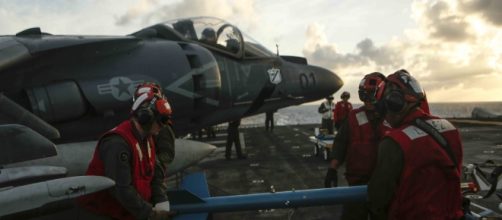Over the past month, there has been a disagreement between the United States and the Republic of Korea over the threat posed by the Nuclear Program in the Asian country. The center of the dispute is whether Pyongyang can still produce enough material for building Nuclear Weapons. A ban on tests of the nuclear weapons has not so far borne any fruit, while sanctions are just at the preparatory stage.
The Intentions of the Terminal High Altitude Area Defense (THAAD)
There has been a common joke, with the US saying yes, while South Korea says no. The US is aware that sanctions on North Korea might work.
This reflects a two side battle for the reality over whether Seoul should continue with the manufacture of the Terminal High Altitude Area Defense (THAAD) or not.
The major objective of the THAAD is intended to respond to threats from Pyongyang, while China has opposed its deployment, bearing in mind that the nuclear agenda is aimed at its own missile forces. The major problem has been that South Korea is not willing to come to grips with the realities that the threat of nuclear weapons from the North is only poised for the reason of significant expansion.
The expansion profits from the accomplishments were made between 2009 and 2014, which were the banner periods for Pyongyang’s nuclear weapons and ballistic missile programs.
The truth is that with the two tests of nuclear devices and three long-range rockets, the Northern side has been the foundation for the growth in the near future of its nuclear deterrent amid threats of sanctions.
The New Modern Plant for Nuclear expansion
In 2011, Pyongyang launched a new modern plant for production of highly enriched uranium for expansion of the country’s nuclear stockpile. Since its inception, the plant has doubled in size, which means that it has doubled the production capacity of uranium. In reality, nuclear tests are not over.
More agonizing is the missile plant for nuclear expansion, which is modernizing from the major launch facility to the test of more strong rockets. On its part, the North is working towards deploying a road-mobile intercontinental missile with the capability of reaching the west coast of the United States, a major advocate of the sanctions.
These developments have a great meaning for the future of the nuclear program in North Korea. The projections from the US-Korea institute at the John Hopkins School of Advanced International studies have clearly shown that by 2020, the threat will grow drastically, as Vladmir Putin weighs in.
There are however, inherent uncertainties if one has to prognosticate on the most secrete programs within a country like Korea, bearing in mind that it is already secretive. The worst case outcome is that the nuclear program in North Korea will still grow and not even sanctions will deter the country from expanding its uranium production capacity. Whatever the outcome, the ability of the North to produce more nuclear weapons will grow, although the rate of growth is unclear.


